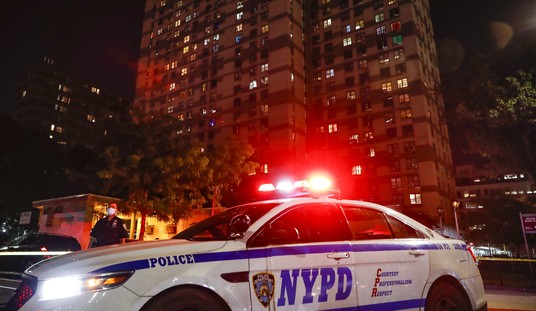The Trump Administration announced in late December a major push forward on one of the signature features of the Tax Cuts and Jobs Act of 2017. The president's executive order creating the White House Opportunity and Revitalization Council looks like an exciting new feature of the president's agenda to "Make America Great Again." What an impact this executive order will have in 2019.
Chaired by Housing and Urban Development Secretary Dr. Ben Carson, and supported by Treasury Secretary Steve Mnuchin and Commerce Secretary Wilbur Ross, the council will spearhead initiatives to develop Opportunity Zones in over 8,000 designated areas in all 50 states, the District of Columbia and five U.S. territories. Opportunity Zones represent a promise of increased jobs, investment and growth for the communities that need it most.
While wages are rising, the nation's unemployment rate is currently at a 49-year low and unemployment among African-Americans sits at a record low of 5.9 percent -- both impressive achievements -- there are still communities in our country that have seen little to no new investment in generations. Under the new policies, any distressed area that is designated as an Opportunity Zone will receive a significant set of incentives to drive private sector investment -- including, notably, zero capital gains tax on any OZ investment held for at least 10 years. By offering incentives that encourage investors to think in terms of decades instead of days, the Opportunity Zone model differs significantly from previous programs. It ensures that investments made in the current environment are sustainable and robust.
The council's long-term approach, as expressed by Secretary Carson, "means that new growth becomes consistent growth and new jobs become steady jobs." The result is an innovative market and place-based approach that creates a win-win for both investors and distressed communities. By incentivizing underserved communities, Carson explains, "Opportunity Zones create promise out of risk, and those investments, in turn, create communities that are vibrant and safe, with a sense of ownership and contribution to the wellbeing of our society."
At the signing of the order in the Oval Office, Baltimore pastor Donte Hickman announced the initiation of a model project to demonstrate the potential of the Opportunity Zones. Hickman, who serves as pastor of the Southern Baptist Church, announced that the church's affiliated Center Community Development Corporation, in conjunction with other local stakeholders, had developed an East Baltimore Revitalization Plan to address the development of a 100-acre parcel near Johns Hopkins Hospital. Hickman thanked the president for his leadership and assured potential investors and government agencies that "we have the plan, we have the property, we have the people, we have the professional expertise and we have the prospectus to jumpstart your urban initiative."
Recommended
Projects like the Baltimore demonstration project -- and other projects, underway in Louisville, Kentucky, and around the country -- represent literal seeds of prosperity sprouting amid what were previously deserts of desolation and decay. But rather than give people bread, it enables businesses and residents of these areas to actually grow their own wheat.
The Opportunity Zone legislation is set to directly unleash over $100 billion in investor funds, and potentially a lot more in terms of follow-on investments. It also comes on the tail of the president's proposed legislation, the First Step Act, which would give former inmates and nonviolent offenders the chance to become productive, contributing, law-abiding citizens, potentially affecting thousands of inner-city residents in Opportunity Zones.
The genius is this: The president announced significant prison reform, potentially freeing thousands of inmates and helping them obtain skills, while his Opportunity Zone program would, at the same time, ostensibly give returning felons opportunities -- the very communities to which they are returning. These returning citizens will not be returning to communities mired in crime and lacking opportunity, but rather to communities on the rise.
Both the executive order and legislation have attracted widespread bipartisan support and participation, led by South Carolina Republican Sen. Tim Scott, a key mover of both programs. These initiatives also come at a critical point in Trump's presidency, as a Democratic Congress gets set to take power in January. While some pundits have pointed to the political risk the president faces from a Congress that seems hell-bent on impeachment, their Democrats may decide that working with the president on initiatives such as these outweighs the political benefits of impeachment.
The president's seemingly subtle pivot to cooperation and his willingness to break bold new ground on initiatives that align both the political and economic divisions of the country should not go without notice. By aligning Wall Street with the needs of mainstream Americans, the president is forging the social cohesion America needs in order to restore its promise.
What the president is proposing is a fundamental shift in the landscape. No longer will jobs be merely concentrated in a few large city centers -- cities swollen by decades of outmigration from underinvested communities. Rather, by creating incentives for local investments, the president is promising to bring jobs to the people. In doing so, he may be creating a new geography of opportunity and growth.


